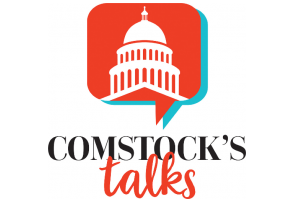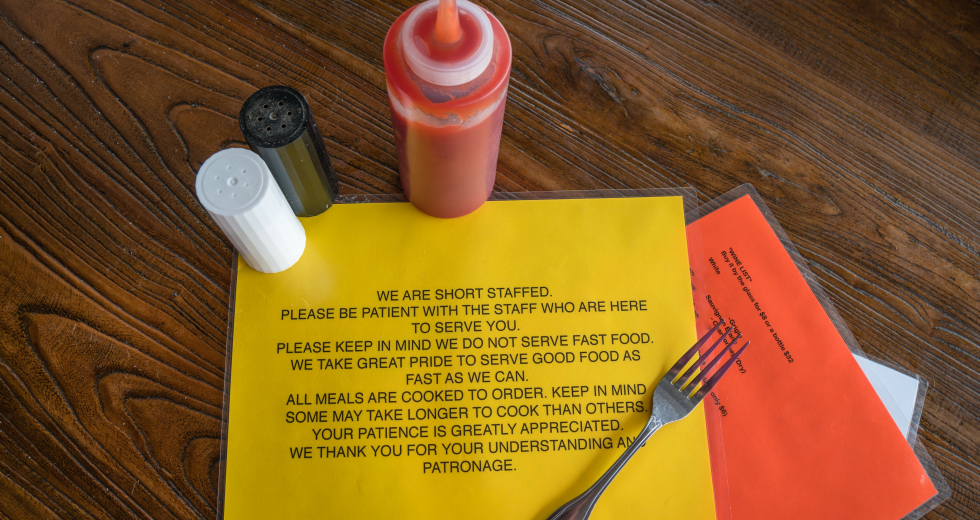The Sacramento region added 50,000 jobs and cut the unemployment rate in half last year, according to Employment Development Department statistics. Even so, it seems the “help wanted” signs are still very plentiful. A restaurant near our Comstock’s office, for example, has posted a sign that reminds us “The world is understaffed. Please be patient,” as servers scramble to keep up with the dinner rush.
Doesn’t anybody want to work anymore?
It’s not just a rhetorical question. More than 50 percent of those surveyed by Pew Research said they believed they would get ahead in their careers by working harder. I was heartened to see that, because my personal mantra for success has always been that working harder is the first and best way to solve most problems.
But in the last few years, the way many of us work — and how we define working harder — has changed. Those fortunate to work from home have become accustomed to flexible schedules. Some believe they are more productive without the distraction of meetings and other office interruptions. To them, productive time is more important than face time. But no matter what kind of business you have, you are not alone in searching for employees. Small business owners have told pollsters that recruiting and keeping good employees is their biggest problem. The competition is so fierce that one local business owner, who has had job openings go unfilled for up to a year, recently told me “It’s a war for talent,” especially since recent surveys show we have only 68 people for every 100 jobs. This feels like a long-term shift in the economy. Employers are changing policies — and their attitudes — to attract them. A principal in an architectural firm told me she’s seen a shift in workstyles with the newer generation. Even before the pandemic, her firm accommodated staff who asked to work from home at least one day a week so they could take care of things like child care, the lack of which is one of the biggest things keeping people out of the workforce. Her firm, like many others, now has a hybrid schedule, with some days reserved for in-office meetings while employees work from home on the other days.
That works as long as everyone is professional and that quality work gets done on time. We have found that to be true here at Comstock’s. I’m in the office every day, but only five others of our staff come into the office — and usually only two days a week — to put out each issue. Still, stories get edited, ads get sold and deadlines are met while most of my staff work from home or wherever else they choose. I’m finding that flexibility is a two-way street — it helps my employees with their everyday lives, and it gives me the potential to cut down on the size of our costly office space. I hear of many offices that are downsizing as a result of remote work.
Almost everyone I’ve talked to lately is dealing with this issue. River City Bank CEO Steve Fleming told me staff morale has never been higher in the three years his employees have had the option of working remotely. His top producers before the pandemic are still his top producers today. The marketing director for a large construction company, and a few others, emphasized that it’s still important that employees feel connected to one another, with a remote schedule. His firm has an Employee Council, about eight to 10 people who create events once a quarter, like Hawaiian Shirt Day, with lunch to bring employees together and encourage them to spend more workdays in the office. “We think keeping things enjoyable helps retain employees,” he said in an email. A local PR firm with a three-day in-office schedule celebrates Thursday evenings with a “mocktail hour” to make everyone on the staff feel connected.
Ultimately, I think that’s the most important thing to keep in mind here. Regardless of when people work, they need to feel connected to other people, whether it’s to colleagues in an office or to customers. Over the years, I’ve found that nothing beats talking to people in person. You learn so much more when you can see the expressions on their faces or their gestures. You can say so much more when you look them in the eye. There’s confidence in a handshake that simply can’t be matched by an email. That’s why I think this hybrid work setup can be the best of all worlds.
The owner of a Sacramento engineering firm feels that his employees have changed his attitude about work as well. When he was younger and bringing up kids, he said in an email, it was firmly believed that the balance was “more work/less life” and that you wouldn’t get ahead if you didn’t put work first (my work harder mantra). “As a boomer, I love this concept of work-life balance,” he said. “I am learning from NexGen!”
With the traditional “9 to 5” seemingly going the way of the eight-track tape, that willingness to change — while remaining connected to people — seems the right formula for winning the “war for talent.”
Winnie Comstock-Carlson
President and Publisher
–
Stay up to date on business in the Capital Region: Subscribe to the Comstock’s newsletter today.
Recommended For You

Dilemma of the Month: Can I Make My Remote Workers Come Back?
Yes, employers can ask employees to come back to the office or
face termination — but should they?

Could ChatGPT Replace Comstock’s Writers?
AI is a unique innovation that seems to be taking off like a rocket with plans to replace many otherwise human-developed work; but in the end, it could spell disaster to lots of today’s industries if we lose sight of the fact that it needs to work for us, not the other way around.

Evil HR Lady on Comstock’s Talks: Should a New Hire Be Allowed to Take a Trip?
PODCAST: Take a trip with the Evil HR Lady as she answers a question about a new hire who wants to go on vacation.





